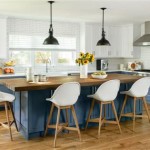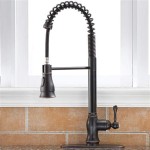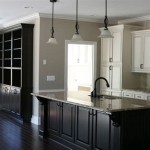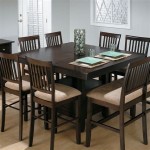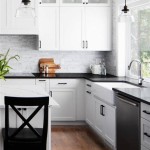Kitchen Cabinet Handles and Hinges: A Comprehensive Guide
Kitchen cabinets are a crucial element in any kitchen design, providing storage and contributing significantly to the overall aesthetic. While the cabinet boxes themselves are important, the hardware, specifically handles and hinges, plays a vital role in both the functionality and appearance of these cabinets. Choosing the right handles and hinges can significantly impact the user experience, the durability of the cabinets, and the overall style of the kitchen.
This article provides a comprehensive overview of kitchen cabinet handles and hinges, exploring the various types available, factors to consider when selecting them, and tips for proper installation and maintenance.
Understanding Kitchen Cabinet Handles
Kitchen cabinet handles are more than just decorative elements; they are functional components that facilitate easy access to the cabinet's contents. Handles come in a wide variety of styles, materials, and sizes, allowing homeowners to customize the look and feel of their kitchen. The choice of handle should complement the overall design scheme and be comfortable to use.
Types of Kitchen Cabinet Handles:
- Knobs: Knobs are single-point attachment hardware, typically round, square, or uniquely shaped. They are often used on cabinet doors and drawers and are available in various materials such as metal, wood, glass, and ceramic. Knobs offer a simple, classic look and are generally more affordable than pulls.
- Pulls: Pulls are hardware with two or more attachment points, providing a more substantial grip than knobs. They come in various lengths and styles, including bar pulls, arch pulls, cup pulls, and recessed pulls. Pulls are commonly used on larger drawers and cabinets, offering a more ergonomic and modern aesthetic.
- Bar Handles: Bar handles offer a long, sleek, and contemporary look. They are commonly used on both cabinets and drawers and are available in different lengths and finishes. Their minimalist design makes them suitable for modern and transitional kitchens.
- Cup Pulls: Cup pulls, also known as bin pulls, feature a curved, cup-like design. They are often used in traditional or farmhouse-style kitchens and provide a comfortable grip for opening drawers.
- Recessed Pulls: Recessed pulls, also known as finger pulls or edge pulls, are installed flush with the cabinet door or drawer front. They offer a minimalist, seamless look and are ideal for modern kitchens where a clean aesthetic is desired. These pulls are relatively discrete.
Materials Used for Kitchen Cabinet Handles:
- Metal: Metal is a popular choice for kitchen cabinet handles due to its durability and versatility. Common metals used include stainless steel, brass, nickel, chrome, and bronze. Metal handles are available in various finishes, such as polished, brushed, and matte, allowing homeowners to match their existing kitchen fixtures.
- Wood: Wood handles offer a warm, natural look and are often used in traditional or rustic kitchens. Wood handles can be stained or painted to match the cabinet finish.
- Glass: Glass handles add a touch of elegance and sophistication to kitchen cabinets. They are available in clear, frosted, or colored glass and can be paired with metal accents.
- Ceramic: Ceramic handles provide a classic, charming look and are often used in vintage or farmhouse-style kitchens. Ceramic handles can be hand-painted or decorated with intricate designs.
- Acrylic: Acrylic handles offer a modern, translucent look and are available in various colors. They are lightweight and durable, making them a practical choice for contemporary kitchens.
Factors to Consider When Selecting Kitchen Cabinet Handles:
- Style: The style of the kitchen cabinets should influence the choice of handles. For example, modern kitchens often feature sleek, minimalist bar pulls, while traditional kitchens may incorporate knobs or cup pulls.
- Size: The size of the handle should be proportional to the size of the cabinet door or drawer. Larger cabinets and drawers typically require longer pulls for a more balanced look and comfortable grip.
- Finish: The finish of the handle should complement the other kitchen fixtures and appliances. Matching the handle finish to the faucet, light fixtures, and cabinet hardware creates a cohesive look.
- Comfort: The handle should be comfortable to grip and use. Consider the shape and size of the handle to ensure it fits comfortably in the hand and provides adequate leverage for opening cabinets and drawers.
- Durability: The handle should be made of durable materials that can withstand daily use. Metal handles are generally more durable than wood or glass handles.
- Budget: Kitchen cabinet handles range in price from affordable to high-end. Setting a budget before shopping for handles can help narrow down the options and prevent overspending.
Exploring Kitchen Cabinet Hinges
Kitchen cabinet hinges are essential hardware components that allow doors to swing open and closed. Hinges come in various types and styles, each designed for specific applications and cabinet configurations. The choice of hinge can affect the appearance of the cabinet, the ease of use, and the overall durability.
Types of Kitchen Cabinet Hinges:
- Butt Hinges: Butt hinges are the most common type of cabinet hinge. They consist of two rectangular leaves connected by a pin. One leaf is mortised into the cabinet frame, and the other is mortised into the cabinet door. Butt hinges are available in various sizes and finishes and are suitable for most cabinet applications.
- Overlay Hinges: Overlay hinges are designed for cabinet doors that overlay the cabinet frame. They are available in full overlay, half overlay, and partial overlay configurations. Overlay hinges allow the door to conceal the cabinet frame, creating a seamless look.
- Inset Hinges: Inset hinges are used for cabinet doors that are flush with the cabinet frame. They are typically used in traditional or vintage-style kitchens and require precise installation to ensure proper alignment.
- Self-Closing Hinges: Self-closing hinges feature a spring mechanism that automatically closes the cabinet door when it is partially closed. They prevent doors from being left ajar and provide a convenient, hands-free closing function.
- Soft-Close Hinges: Soft-close hinges incorporate a dampening mechanism that slows down the closing motion of the cabinet door, preventing slamming and reducing noise. They are a popular choice for modern kitchens and provide a luxurious feel.
- European Hinges: European hinges, also known as concealed hinges, are installed inside the cabinet door and frame, providing a clean, frameless look. They are adjustable, allowing for precise alignment and easy door removal. European hinges are commonly used in modern, frameless cabinets.
- Pivot Hinges: Pivot hinges allow a cabinet door to swing open from a single point, rather than along an edge. They are often used on specialty cabinets, such as corner cabinets or pantry doors.
Materials Used for Kitchen Cabinet Hinges:
- Steel: Steel is a durable and affordable material commonly used for kitchen cabinet hinges. Steel hinges are available in various finishes, such as zinc, nickel, and brass.
- Stainless Steel: Stainless steel hinges offer excellent corrosion resistance and are ideal for kitchens with high humidity levels. They are also a popular choice for modern kitchens due to their sleek, contemporary look.
- Brass: Brass hinges add a touch of elegance and sophistication to kitchen cabinets. They are often used in traditional or vintage-style kitchens and are available in various finishes, such as polished, antique, and brushed brass.
Factors to Consider When Selecting Kitchen Cabinet Hinges:
- Cabinet Type: The type of cabinet, whether it is a framed or frameless cabinet, will determine the type of hinge required. Framed cabinets typically use butt hinges or overlay hinges, while frameless cabinets require European hinges.
- Door Overlay: The amount of door overlay, or how much the door covers the cabinet frame, will affect the choice of hinge. Full overlay hinges are used when the door completely covers the frame, while partial overlay hinges are used when the door partially covers the frame.
- Closing Mechanism: Consider whether self-closing or soft-close hinges are desired. Self-closing hinges provide a convenient, hands-free closing function, while soft-close hinges prevent slamming and reduce noise.
- Adjustability: Hinges should be adjustable to allow for precise alignment of the cabinet doors. Adjustable hinges allow for easy door leveling and gap adjustment.
- Durability: The hinge should be made of durable materials that can withstand repeated use. Steel and stainless steel hinges are generally more durable than brass hinges.
- Load Capacity: The hinge should be able to support the weight of the cabinet door. Larger and heavier doors require hinges with a higher load capacity.
- Aesthetics: The hinge should complement the overall style of the kitchen cabinets. Concealed hinges offer a clean, frameless look, while exposed hinges can add a decorative touch.
Installation and Maintenance of Kitchen Cabinet Handles and Hinges
Proper installation and regular maintenance are crucial for ensuring the longevity and functionality of kitchen cabinet handles and hinges. Incorrect installation can lead to misalignment, loose hardware, and premature wear and tear. Regular maintenance, such as tightening screws and lubricating hinges, can prevent problems and extend the lifespan of the hardware.
Installation Tips:
- Use the Right Tools: Use the appropriate tools for the job, such as a drill, screwdriver, measuring tape, and level. Using the wrong tools can damage the hardware or the cabinet.
- Measure Accurately: Measure accurately before drilling any holes. Use a template or measuring tape to ensure that the holes are properly aligned and spaced.
- Pilot Holes: Drill pilot holes before installing screws. Pilot holes prevent the wood from splitting and make it easier to drive the screws in straight.
- Tighten Screws Properly: Tighten screws snugly but not excessively. Over-tightening screws can strip the threads or damage the cabinet.
- Use Shims: Use shims to level cabinet doors. Shims can be placed behind the hinges to adjust the door's alignment.
Maintenance Tips:
- Tighten Loose Screws: Regularly check the screws on the handles and hinges and tighten any that are loose. Loose screws can cause the hardware to become wobbly or fall off.
- Lubricate Hinges: Lubricate hinges with a silicone-based lubricant to prevent squeaking and ensure smooth operation. Apply a small amount of lubricant to the hinge pin and move the door back and forth to distribute the lubricant.
- Clean Handles Regularly: Clean handles regularly with a mild soap and water solution. Avoid using abrasive cleaners, which can damage the finish.
- Inspect for Damage: Inspect the handles and hinges for any signs of damage, such as cracks, rust, or corrosion. Replace damaged hardware promptly to prevent further problems.
- Adjust Hinges as Needed: Adjust hinges as needed to maintain proper door alignment. Over time, cabinet doors may shift or sag, requiring hinge adjustments to restore proper alignment.
Selecting and maintaining the appropriate kitchen cabinet handles and hinges are crucial for ensuring the functionality, durability, and aesthetic appeal of kitchen cabinets. By understanding the different types of handles and hinges available, considering the factors that influence the choice, and following proper installation and maintenance procedures, homeowners can create a kitchen that is both beautiful and functional.

Choosing The Right Hardware For Your Kitchen Cabinets

Cabinet Hardware Buying Guide

Black Hardware Kitchen Cabinet Ideas The Inspired Room Cabinets

Best Kitchen Cabinet Hardware 2024 Hgtv

Trending Cabinet Hardware At Lowe S

Cabinet Hardware Metropolitan Cabinets

The Ultimate Guide For Cabinet Hardware Placement And Sizing San Diego

Functional Cabinet Hardware Is Important Kitchen Design Partner

Cabinet Hardware Shop Kitchen

Design 101 Cabinet Hardware Placement Lark Linen
See Also

